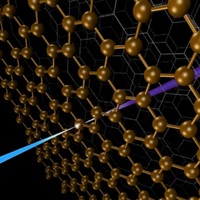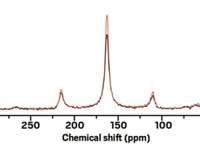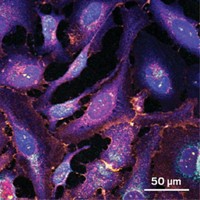Advertisement
Grab your lab coat. Let's get started
Welcome!
Welcome!
Create an account below to get 6 C&EN articles per month, receive newsletters and more - all free.
It seems this is your first time logging in online. Please enter the following information to continue.
As an ACS member you automatically get access to this site. All we need is few more details to create your reading experience.
Not you? Sign in with a different account.
Not you? Sign in with a different account.
ERROR 1
ERROR 1
ERROR 2
ERROR 2
ERROR 2
ERROR 2
ERROR 2
Password and Confirm password must match.
If you have an ACS member number, please enter it here so we can link this account to your membership. (optional)
ERROR 2
ACS values your privacy. By submitting your information, you are gaining access to C&EN and subscribing to our weekly newsletter. We use the information you provide to make your reading experience better, and we will never sell your data to third party members.
Imaging
Spectroscopy method combines the best of Raman and fluorescence
Combination technique provides simultaneous selectivity and sensitivity
by Celia Arnaud
April 5, 2019

Fluorescence spectroscopy has great sensitivity, allowing scientists to detect signals from single molecules. But it has limited chemical specificity, making it hard sometimes for researchers to distinguish between overlapping signals from different fluorescent dyes. For Raman spectroscopy, the reverse is true. A new method called stimulated Raman excited fluorescence (SREF) combines the strengths of both techniques (Nat. Photonics 2019, DOI: 10.1038/s41566-019-0396-4).
“Raman spectroscopy and fluorescence are really powerful tools with complementary advantages and disadvantages,” says Wei Min, a chemistry professor at Columbia University who led the research. “Our work is putting them together in a single process. Hopefully we can have single-molecule sensitivity with Raman specificity.” Other single-molecule Raman methods such as surface-enhanced Raman require plasmonic metal surfaces and are hard to use with biological imaging.
In SREF, the researchers use a pair of laser pulses to excite a molecule to a vibrational excited state. Such excitation happens only if the frequency difference between the two laser pulses matches the frequency of the vibrational state. Then, before the molecule can relax back to the ground state, a third laser pulse promotes the molecule to an electronic excited state. From there, the molecule emits a fluorescent photon as it relaxes back to the ground state.
The Columbia team used SREF to detect four isotope-edited versions of the fluorescent dye rhodamine 800. Each dye has nearly identical fluorescence emission but different Raman spectra due to the different incorporated isotopes. The differences in the Raman frequencies allow the researchers to distinguish the dyes when they label cells with them.
Min, who previously demonstrated stimulated Raman with 20 labels, thinks that SREF will allow him to use 100 or more “colors” simultaneously. “Color is now a two-dimensional concept,” he says, with each color defined by both the Raman and the fluorescence frequencies.
Adding the Raman selectivity to experiments involving fluorescent tags is the most significant advance with SREF, says John C. Wright, a spectroscopist at the University of Wisconsin–Madison. “There has been great interest in using multiple-color fluorescence tags to image different biological molecules but that approach is limited by the spectral width of fluorescent peaks,” he explains. “Vibrations have very narrow widths so they can create more selectively vibrationally tagged molecules and perhaps drastically increase the number of molecules that can be distinguished.”
Wright predicted in the 1980s that such a combination of stimulated Raman and fluorescence pulses was possible. But he wasn’t able to detect the expected signal because it was swamped by an unwanted two-photon excited fluorescence of the dye he used.
Min’s team avoided this problem with so-called preresonance stimulated Raman, in which they operate the lasers at frequencies just below the dye’s fluorescence absorption frequency. The preresonance enhances the stimulated Raman by five orders of magnitude, Min says. “We can compete and win against background such as two-photon fluorescence.”
Min and colleagues next plan to see if they can combine SREF with superresolution microscopy techniques.





Join the conversation
Contact the reporter
Submit a Letter to the Editor for publication
Engage with us on Twitter